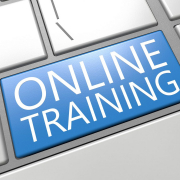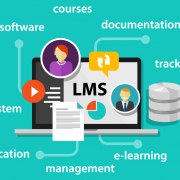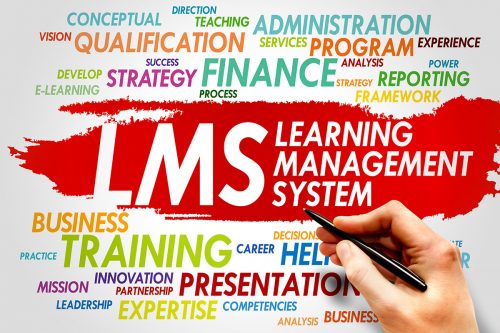Mistakes You May Encounter with Online Training
The online training course is not a simple task for its creators. Having to deal with the sheer volume of work and the stressful nature of teaching, in general, can be overwhelming. Understandably some mistakes can and will happen. Although, for the most part, the mistakes will be less about what you do and more about what you did not do. The worst thing is that once they happen, they tend to go unnoticed. So here’s our list of online training mistakes to watch out for.
No pre-assessment
One of the main mistakes involved in online training is failing to pre-assess your learners. It is crucial to determine their level of knowledge in order to know where to start. If the courses are too advanced, your trainees will have a hard time keeping up. Either it will take forever for them to complete it, or even worse, they will develop significant knowledge gaps. Besides, a disproportionately high level of difficulty can wreak havoc on your learner’s engagement. If they are expected to master something so far out of their reach, they could start doubting their own capabilities, lose all motivation, and ultimately fall into despair.
On the other hand, if the content is too easy it will cause different kinds of problems. If your learners are required to go over things they have already mastered, they would be simply wasting their time. Along the same line, if the content is too easy it will appear redundant to learners, they will not be properly engaged by it, and their motivation will again suffer for it. A simple test to determine their current skill level can take all the guesswork out of the process. And you will know exactly which content is appropriate for each learner.
Not having clear objectives
Another common mistake is failing to define clear learning goals and objectives. Before anything else, you have to determine what are the desired outcomes of your training program. What is it exactly that you are trying to achieve, which skills do you wish to develop? Do you have to be as specific as possible? Only then will you be able to choose the best materials and organize them in a logical and effective manner. Everything you decide to include has to serve a specific purpose, to work towards a specific learning goal, like pieces of a puzzle.
The goals are not all though. You know what is it you wish to teach, but how exactly are you to go about it? Not having learning objectives is like having a map with a marked final destination, but without any landmarks along the way. A training program is not just the sum of its content. Simply pilling materials on your students are not going to give you the results you seek. Defining individual objectives helps with course organization and optimization. Vague objectives will only result in disorganized and confused learners. On the other hand, strong and clear objectives will give a sense of plan and structure to the course, and it will give confidence to the learners. At the same time, it gives you something to measure their progress against, making sure they haven’t strayed from the path.
No real-world context
It is shocking how often training courses remain in the realm of theory or take only a shallow dip into realistic scenarios at best. Yet this is extremely important for your trainees. Reading, or watching a video about something is entirely different than actually doing it, e.g. watching a boxing match and fighting in the ring yourself. Your trainees do not learn simply for the sake of it, their motivations are not purely philosophical and theoretic. They are being trained for a specific purpose, to carry out a specific set of tasks. In any foreseeable event, they will have to carry these tasks out in real-life situations and deal with real people and real problems.
Preparing for realistic situations eliminates doubt and uncertainty; this gives them a sense of security and confidence which they wouldn’t acquire otherwise. Your trainees know full well that one day their training will end and that they will be expected to actually do all the things they learned about. They want to be ready and perform to the best of their ability; after all, their careers depend on it. So, give your employees what they need and develop some real-world context for your training modules.
General over personal
It is easy to look at a group of trainees as a homogenous mass, a single body to which we administer our instruction. Nothing could be further from the truth. Each learner is an individual, with their own strengths and weaknesses; with their own learning style, preferences, goals, and expectations. Generalized training programs might have been sufficient in the past, but not anymore. We do not simply talk about any kind of training, we talk about the best possible training you can provide for your employees. And the best training will be that which is tailored to their individual needs. Advanced learner analytics makes it much easier for L&D professionals to acquire the necessary information and put it to good use. With this insight, they are able to outline specific learning patterns and the activities which are proven to be most effective for each one of them.
Poor visuals
In order to improve the visual design of your online training, one doesn’t have to be a graphic designer. Although it is nice to have a beautifully designed training course, it is not exactly what this refers to. When it comes to visuals, it is more of a question of “how well it works”, rather than “how it looks”. In this case, less is more. One should be careful not to overload the learner’s senses or distract them. Let’s not forget the point, users are there to learn, they have to focus on important aspects of instruction. Of course, huge blocks of text should be avoided at all times, but we shouldn’t include visuals just for the sake of it. Visuals should be used to illustrate, explain, facilitate retention, and recall of information. Anything we decide to put in our training program has to serve a purpose. Anything which isn’t clearly related to the content should be avoided.
No testing
So you have determined your trainees’ current level and you have developed a water-tight training program for them. The difficulty is appropriate, the content is personalized and the mode of delivery is outstanding. Only one thing remains, you have to test them every now and again. Testing has numerous benefits, it helps to assess both your trainee’s achievements and the success of your teaching strategies. It shows what works, and what has to be improved upon. Additionally, it gives your trainees a sense of direction and a sense of their own performance. Not knowing whether you have actually learned anything from your training can be extremely stressful. Testing serves to reassure learners that their instruction has a tangible effect on their knowledge. Also doing well on a test imparts a great sense of achievement which further motivates the learner to give his/her best in the rest of the course.
Many of the mistakes we mentioned here may seem obvious, and they are when you read about them. But they are notoriously easy to overlook during course creation. Once you have designed a strong online training program, the only thing you need is good eLearning software to deliver it.
YouTestMe provides e-learning for companies that seek to implement or improve their online training strategies.
















